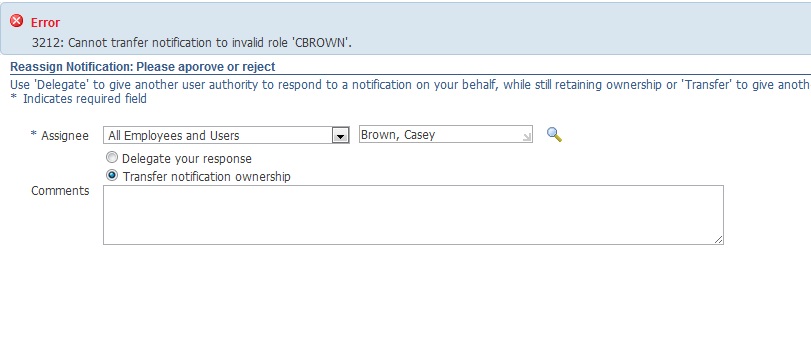Introduction
Oracle Workflow Notification System can be extended to perform extra validation or processing via PLSQL procedures when the notification is being responded to. These PLSQL procedures are called post-notification functions since they are executed after a notification action such as Approve, Reject, Reassign or Request Information is performed. The standard signature for the post-notification function is
procedure <procedure_name> (itemtype in varchar2,
itemkey in varchar2,
actid in varchar2,
funcmode in varchar2,
resultout in out nocopy varchar2);
Modes
The post-notification function provides the parameter ‘funcmode’ which will have the following values:
- ‘RESPOND’, ‘VALIDATE, and ‘RUN’ for a notification is responded to (Approve, Reject, etc)
- ‘FORWARD’ for a notification being forwarded to another user
- ‘TRANSFER’ for a notification being transferred to another user
- ‘QUESTION’ for a request of more information from one user to another
- ‘QUESTION’ for a response to a request of more information
- ‘TIMEOUT’ for a timed-out notification
- ‘CANCEL’ when the notification is being re-executed in a loop.
Context Variables
Oracle Workflow provides different context information that corresponds to the current notification being acted upon to the post-notification function.
WF_ENGINE.context_nid – The notification ID
WF_ENGINE.context_new_role – The new role to which the action on the notification is directed
WF_ENGINE.context_user_comment – Comments appended to the notification
WF_ENGINE.context_user – The user who is responsible for taking the action that updated the notification’s state
WF_ENGINE.context_recipient_role – The role currently designated as the recipient of the notification. This value may be the same as the value of WF_ENGINE.context_user variable, or it may be a group role of which the context user is a member.
WF_ENGINE.context_original_recipient – The role that has ownership of and responsibility for the notification. This value may differ from the value of the WF_ENGINE.context_recipient_role variable if the notification has previously been reassigned.
Example
Let us assume there is an EBS transaction that can only be approved by a certain people thus any attempt to transfer or delegate such notification should be allowed only to users SPIERSON or CBAKER. The way to implement this functionality would be as follows:
- Edit the corresponding workflow definition in Workflow Builder and open the notification.
- In the Function Name enter the name of the procedure where the custom code is handled, for instance, TEST_PACKAGE.Post_Notification
- In PLSQL create the corresponding package TEST_PACKAGE with a procedure named Post_Notification, as follows:
procedure Post_Notification (itemtype in varchar2,
itemkey in varchar2,
actid in varchar2,
funcmode in varchar2,
resultout in out nocopy varchar2) is
l_count number;
begin
if funcmode in ('TRANSFER','FORWARD') then
select count(1) into l_count
from WF_ROLES
where WF_ENGINE.context_new_role in ('SPIERSON','CBAKER');
--and/or any other conditions
if l_count<1 then
WF_CORE.TOKEN('ROLE', WF_ENGINE.context_new_role);
WF_CORE.RAISE('WFNTF_TRANSFER_FAIL');
end if;
end if;
end Post_Notification;
- Launch the workflow process with the changed notification and attempt to reassign or transfer it. When trying to reassign the notification to user CBROWN the screen would like like below:

Check the Workflow API Reference Guide, section Post-Notification Functions, to see all the standard, seeded WF_ENGINE variables available for extending notifications processing.
